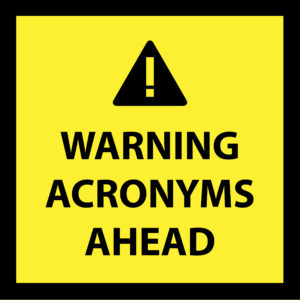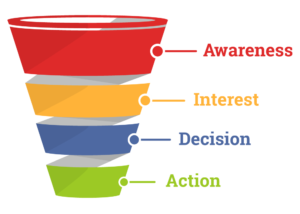 Picture this: you’re in a sales meeting with your team, and everything is going smoothly. Then, suddenly your boss throws out an acronym that everyone seems to understand; everyone that is, except for you. Believe it or not, this happens more than you would think. In the world of sales, there are many terms and acronyms that are unfamiliar to new employees, as well as seasoned salespeople. But since standing up and admitting your lack of knowledge during a meeting can be daunting, we put together a crash course on sales terms and acronyms to get you caught up on sales lingo!
Picture this: you’re in a sales meeting with your team, and everything is going smoothly. Then, suddenly your boss throws out an acronym that everyone seems to understand; everyone that is, except for you. Believe it or not, this happens more than you would think. In the world of sales, there are many terms and acronyms that are unfamiliar to new employees, as well as seasoned salespeople. But since standing up and admitting your lack of knowledge during a meeting can be daunting, we put together a crash course on sales terms and acronyms to get you caught up on sales lingo!
Sales Roles
While knowing sales acronyms is essential, it’s even more integral that you understand what the people using those terms do. So before we dive into the sales acronyms section, let’s recap each sales roles you may run into, and their typical responsibilities.
Sales Development
Sales development professionals, sometimes called SDRs, are typically non-quota carrying salespeople whose job is to set up qualified sales opportunities for the inside sales and field sales teams. They usually are tasked with making calls and emails in high-volume and need to understand the ideal customer profile, including how to pursue those prospects.
Inside Sales
Inside salespeople are often quota-carrying sales professionals who work remotely or from an office. Their common responsibilities include prospecting leads, hosting in-person meetings and conducting demos over the phone and web. Many of these salespeople work on sales opportunities that have been identified by a sales development team.
Field Sales
Field sales roles typically refer to quota-carrying salespeople who work face-to-face with customers in the field. They commonly have larger accounts and more complex deals, but handle less volume.
Account Management
Account management roles commonly refer to team members who help existing customers obtain maximum value out of the solution or product sold by their company. They are closest to the customer and are therefore able to identify opportunities to upsell customers. They are also sometimes referred to as “customer success managers,” or CSMs.
Sales Acronyms & Terms
Now that you have the roles down, it’s time to get into the acronyms and popular terms used in the sales ecosystem. Whether you’re new to the world of sales, or just looking to brush up on your terms, this list will help you quickly understand sales lingo.
KPI (Key Performance Indicator)
A KPI is a measurable value that demonstrates how effectively a company is achieving key business objectives. They are typically established by sales management teams to help every salesperson focus their time on sales-specific behaviors that drive bottom-line results.
MQL (Marketing Qualified Lead)
MQLs are prospects that show interest in your product or service but are not yet ready to commit to buying. MQLs are often assigned to sales development reps who strive to convert the account into an SQL.
SQL (Sales Qualified Lead)
An SQL is a prospective customer with clear intent to buy a solution or product. They are often vetted by some combination of marketing and sales teams to ensure they meet SQL criteria.
SAO (Sales Accepted Opportunity)
A SAO is a prospective customer who has been vetted by both the sales and marketing teams and is ready to move on to the next step in the sales process. They have displayed their intent to buy and it has been determined that they are the right fit for the product or service.
Sales Pipeline
The sales pipeline shows where prospects are in the buyer’s journey. It includes every step of your sales process from start to end and prospects move down the pipeline based on activities such as demos. A sales pipeline is a great indicator of future deals and revenue.
Sales Funnel
The sales funnel is a representation of the number of prospects in various stages of the pipeline. Prospects don’t exit the funnel until they make a purchase.
NPS (Net Promoter Score)
An NPS allows organizations to measure a customer’s happiness, loyalty, and the likelihood that they will refer new customers. A portion of each customer’s score is often based on their response when they’re asked how likely they are to recommend your product or service to others.
CRM (Customer Relationship Management)
A CRM is a technology that helps manage all relationships and interactions with both current and potential customers. CRMs also streamline processes and improve the overall profitability of organizations.
Although sales acronyms and terms can be confusing, they also have the ability to streamline internal communication!
Do you have a colleague that can benefit from this refresher? Share this article with them to get your entire sales team on the same page!



